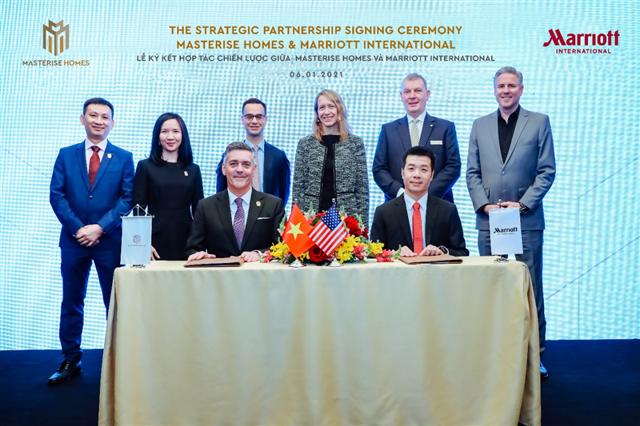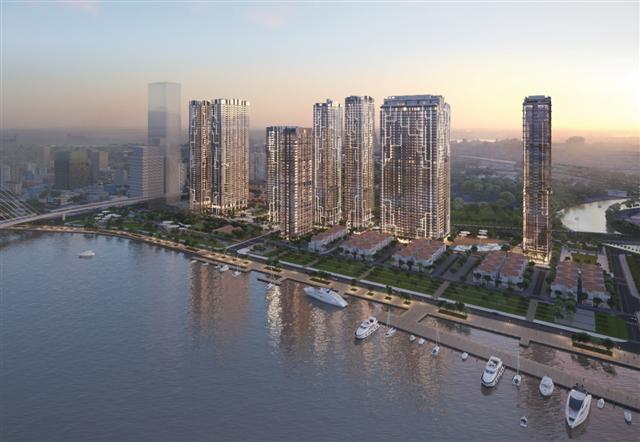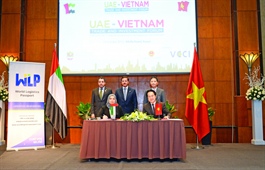Urban branded residences gaining ground in Vietnam
Urban branded residences gaining ground in Vietnam
With strong economic growth forecast and Vietnamese consumers' increasing exposure to global standards of living, urban branded residences are becoming a new market trend.
Despite the Covid-19 pandemic, the Vietnamese economy, unlike most others, was able to escape a contraction in 2020 thanks to competent handling of the crisis, growing at 2.91 percent. According to the World Economic Outlook Report, a survey by the International Monetary Fund (IMF), Vietnam's economic growth rate is one of the four highest in the world.
Vietnam's economy is expected to grow five times by 2035, becoming the 19th largest in the world, says U.K. consultancy the Center for Economics and Business Research (CEBR) in its annual league table on the growth prospects of 193 economies. Its GDP growth is forecast at 7 percent a year over the next five years, and 6.6 percent in the subsequent decade, reaching a nominal GDP of $1.59 trillion - a nearly five-fold increase in 15 years, passing major Asian economies like Taiwan and Thailand.
Riding the economic wave, the rich population in Vietnam posted the world’s second fastest growth over the past decade. The country’s average annual growth rate of those with a net worth between $5-30 million, categorized as a very high net worth (VHNW) population, reached 13.9 percent during the 2010-2019 period, says Wealth-X, a leading global wealth information and insight provider.

A Wealth-X report shows Vietnam ranks second among the world’s top wealth markets. Photo by Wealth-X.
|
The affluent class is forecast to grow strongly in the next five years. By 2025, Vietnam will have 511 ultra-high-net-worth individuals (UHNWI) with a net worth of at least $30 million each and 25,812 high-net-worth individuals (HNWI) with assets of at least $1 million, says The Wealth Report 2021 put out by Knight Frank. This translates to a growth rate of over 30 percent in the next five years.
The era of "branded living"
As top international luxury brands make a foray into Vietnam, the growing and globally-mobile high-net-worth population in Vietnam is aware of which car they want to own and which style of clothes they want to wear. They now seek the same branding experience in their home too.
Branded residences, which are normally a partnership between a brand (often a hotel operator) and developer, is not a new concept internationally or even locally; however, it is an emerging segment in Vietnam.
In January 2021, Marriott International and Masterise Homes entered a milestone partnership to bring the hotelier's first branded residences projects to Vietnam. The agreement is set to allow Masterise Homes to extend its development expertise into Vietnam’s fast-growing luxury real estate market, leveraging Marriott International’s global brands like Marriott, JW Marriott and Ritz-Carlton in projects in Hanoi and Ho Chi Minh City. The strategic partnership introduced Urban Branded Residences to the Vietnamese property market and will deliver unparalleled ultra-luxury living to discerning wealthy customers.

Signing between Masterise Homes and Marriott International. Photo by Masterise Homes.
|
This mirrors the trend worldwide, where over 60 percent of branded residential schemes are in major urban centers, said Matthew Powell, director of Savills Hanoi.
"We feel this trend will become more established over the next few years as the approach delivers superior, guaranteed quality, proven luxury with brand recognition and "5-star standard" service, which also reassures investors and property developers themselves, let alone the attached price-premium. We see opportunities and potential growth in this high-end sub-segment," Powell emphasized.
Putting Vietnam into the spotlight
The first Urban Branded Residences project to result from the partnership between Marriott International and Masterise Homes is Grand Marina, Saigon, which comprises eight residential towers with some 4,500 ultra-luxury branded units from two Marriott International brands – JW Marriott and Marriott. It is Marriott’s largest ever.

Marriott’s first branded residence project in Vietnam is also its largest. Photo by Masterise Homes
|
With branded units starting at $1 million, its price is comparable to those of other branded residences in the region like The Residences at Mandarin Oriental in Bangkok, or The Residences at the St. Regis Singapore.
The success of two launches in Hong Kong and Vietnam proved a large number of customers are confident its quality could also compare to branded residences in the region. Grand Marina succeeded in elevating the benchmark of luxury living in Vietnam to international standards and establishing a new real estate sector in Vietnam: branded residences. Marriott brand association offered global recognition for not only these residences and their owners but also the Vietnam real estate market on the world map.
David Jackson, CEO, Colliers Vietnam, said: "Grand Marina Saigon, backed by Marriott International, has created confidence among customers both locally and abroad. The well-known brand has attracted many buyers, and Vietnam’s real estate has attracted many foreign investors looking at alternative markets with higher upside potential when investment opportunities in their own countries are becoming saturated."
Jason Turnbull, deputy managing director cum CFO, Masterise Homes confirmed the developer’s plan to introduce more branded residences associated with Marriott International brands in 2021 in prime locations across Hanoi and HCMC.
"The launch of branded residential projects with global-standard design, construction and operation will bring a new level of ultra-luxury living to Vietnam and put the country’s real estate market in a higher position regionally and internationally. They will also offer a global address for world elites and successful entrepreneurs, shining a light on opportunities in Vietnam and ultimately attract more foreign investment to the country and contribute to stronger economic growth," said the Masterise executive.






















